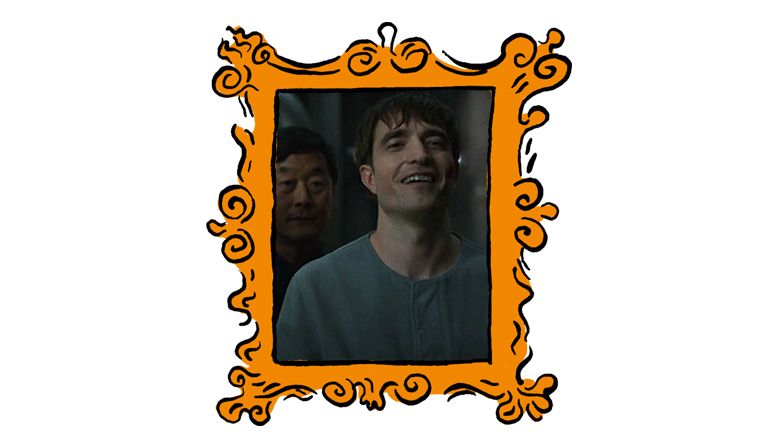“In the case of multiples, we exterminate every individual,” declares Mark Ruffalo’s character, Kenneth Marshall, in Bong Joon-ho’s latest blockbuster, Mickey 17. Cinema has long taught us that doppelgangers (and also, unfortunately, twins) simply cannot coexist. In a desperate bid to escape the debt he has accumulated on Earth, Mickey Barnes (Robert Pattinson) signs himself up to a space programme—spearheaded by the cartoonish, Trumpish goons Marshall and Gwen (Toni Collette)—in which he is cloned again and again, only to be killed again and again, undertaking the most hazardous of missions supposedly for the benefit of greater humankind. The result is a surprisingly cheerful, screwball critique of corporate malpractice and capitalist society’s disregard for safety in the workplace.
It’s not just Mickey who is multiplying. Doppelgangers are popping up at an alarming rate in cinema; within a three-month span, Ryan Coogler’s Sinners, Barry Levinson’s The Alto Knights and Osgood Perkins’s The Monkey are sending us whirling through the uncanny valley.
In the brooding, sinewy horror Sinners, Michael B Jordan’s twofold role as twin brothers Smoke and Stack gestures towards wider dualities: racial segregation in the Jim Crow-era South and the line between the alive and the undead. The film’s premise is that music “true” enough can summon spirits from the past and future, which does not bode well for a party taking place in Smoke and Stack’s hometown. When the divide between the human and the otherworld is prised open by Miles Caton’s angelic singing, the duo is forced to fend off a league of malevolent demons.
Another of these releases, The Monkey, similarly centres on twins (here Theo James)—one good and the other somewhat more evil, willing to indiscriminately murder hundreds of his neighbours in the hope that a cursed toy might eventually turn its fatal wrath on his sought-after victim. Again, sinister twins in this horror prove a handy metaphor for the dividedness of human nature itself. And the self-love, self-hate split is clearer still in the 1950s New York-set The Alto Knights, where two Italian-American gangster family patriarchs go from being inseparable pals to hostile rivals—both played, of course, by a single veteran star, Robert De Niro. (The actor taking on the part of not one but two mobsters within the same film, following a lifelong onscreen career as an organised criminal, is funny from the outset.)
Film’s fascination with dead ringers stretches back to its very inception. Der Student von Prag (1913) impressively managed to show a man’s mirror-image absconding for a jaunt around town, while, even earlier, the trailblazing actor, director and, aptly, magician George Méliès created the short Un homme de têtes (1898), in which Méliès duplicates himself onscreen four times over.
This preoccupation with doppelgangers is perhaps unsurprising, since, pre-Dolly the Sheep, film was the prime technology to explore the possibility of cloning a person. And, fundamentally, it is a medium which hinges on a kind of cloning—the reproduction of images. There is something compelling yet often unsettling about seeing the same actor doubled, tripled or quadrupled within a single frame. This is especially the case when doppelgangers appear to physically interact with themselves, as with James Wong Howe’s canny cinematography in The Prisoner of Zenda (1937), which makes Ronald Colman seem to shake hands with himself.
A precedent for actors doubling up on roles was already set by theatre. While doppelgangers most often belong to the horror genre, they have comedic uses too. Siblings and the potential mishaps of mistaken identities created a throughline from Shakespeare’s Twelfth Night to The Parent Trap (1961)—the latter featuring the first-ever sisters played by one person, Hayley Mills.
But the recent explosion of doppelgangers onscreen cannot be solely down to their malleability. From Jordan Peele’s chiller Us (2019) to Joanna Hogg’s The Eternal Daughter (2022) to the gender-switched remake of Dead Ringers (2023), doppelgangers are, quite suddenly, everywhere. Advancements in visual effects undoubtedly are partly behind this, ensuring that the replication of actors is evermore seamless. Some critics have suggested there may be a two-for-the-price-of one financial element involved. Perhaps there’s even prestige associated with playing doppelgangers, as a way to showcase an actor’s range.
Yet, still, there appears to be something more going on. The seismic success of Naomi Klein’s memoir-turned-political-analysis Doppelganger, which opens with Klein’s experiences of being mistaken for another woman on the opposite side of the political spectrum, shows that doppelgangers are part of an even wider zeitgeist.
Over the past decade, apps that assist you in finding your lookalike have proliferated. News stories of stolen identity—including, in January this year, a woman accused of murdering her doppelganger (found via Instagram) so as to fake her own death—proliferate. Social media and the digital sphere have brought us nearer than ever to our doubles, only a phone or laptop screen away. So much so that, even just a few years ago, the plotline of Denis Villeneuve’s psychological thriller The Enemy (2013) would have seemed far-fetched, but now it’s worryingly close to reality. In the film, Jake Gyllenhaal stars as a professor and an actor who look and sound exactly the same and, by some fateful coincidence, happen to both reside in Toronto. The professor discovers his doppelganger when he borrows a DVD recommended by a colleague and spots his lookalike, an unassuming extra, in the background. After some online stalking, Gyllenhaal tracks him down. Nowadays, thanks to the online world, the idea of a sinister second version of yourself is no longer the stuff of the supernatural realm.
What these films all seem to share is a fear of being passed over in favour of someone else, our fading significance and disposability. Before Mickey 17, there was Moon (2009), an oddly similar film about a cloned astronaut readily killed off by his spaceship chatbot, “Gerty”. In the face of AI, perhaps these doppelganger films have a terrifying new significance—they voice a growing fear that we might be replaced.
The age of the doppelganger
From Bong Joon-ho’s ‘Mickey 17’ to Ryan Coogler’s ‘Sinners’, from television to literature, our sinister others are suddenly everywhere. Why?
March 06, 2025

Robert Pattinson in ‘Mickey 17’









